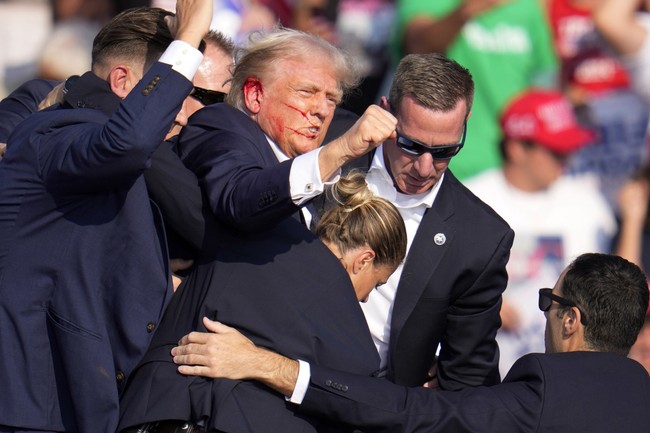
Hindsight is, as the saying goes, always 20-20. And in that 20-20 hindsight, it seems every day we see a new revelation as to what went wrong on July 13th, 2024, to allow a young, inexperienced man — a boy, really — to come within a literal whisper of killing former President Donald Trump.
On Monday, it came to light that the would-be assassin, Thomas Matthew Crooks, had caught the attention of local law enforcement more than 90 minutes before Crooks fired the shots that injured Trump and two bystanders and killed local firefighter Corey Comperatore, who died shielding his family.
Would-be Donald Trump assassin Thomas Matthew Crooks landed on authorities’ radar more than 90 minutes before he opened fire at the former president’s Pennsylvania campaign rally — roughly a half-hour more than what officials previously claimed — according to newly released text messages.
Text messages between members of the Beaver County Emergency Service Unit obtained by the New York Times revealed a more concrete — and earlier — timeline leading up to the shooting that grazed the former president’s ear, injured two rallygoers and killed one.
The messages also revealed that Crooks, 20, was aware of the law enforcement presence as he prepared his assassination attempt on the GOP nominee.
“Someone followed our lead and snuck in and parked by our cars just so you know,” a counter-sniper texted a colleague as he headed out around 4:26 p.m.
There’s more; the shooter is now known not to have used a ladder but to have climbed on top of an HVAC unit and then traversed several rooftops before arriving at the location from where he fired the shots.
The FBI on Monday morning told reporters that would-be Trump assassin Thomas Crooks accessed the roof of a building near former President Trump’s July 13 rally in Butler, Pennsylvania, by climbing up HVAC equipment and piping.
Crooks then traversed multiple rooftops before he found his shooting position on top of a building owned by American Glass Research (AGR), located near the Butler Farm Show fairgrounds about 150 yards from where the former president spoke at his rally.
See Related: Trump Praises Female Secret Service Agent Who Defended Him, Calls Critics ‘Fake News’
Trump Shooter Planned to Use Explosives As ‘Diversion’ to Cover Escape, FBI Still Doesn’t Know Motive
Then there is this.
Over the next hour, law enforcement identified a building of interest, and snipers took photos of Crooks and his bicycle left near the rally grounds. Republican Missouri Sen. Josh Hawley, who was briefed on the assassination attempt, previously told Fox News Digital that a sniper “had eyes on” the suspicious person about 20 minutes before Crooks began firing.
This brings up several questions. It’s not clear that the snipers had identified that Crooks was carrying a weapon, although later photos of Crooks after he was shot by a Secret Service rifleman (we will not reproduce those photos here) indicate he was not wearing heavy clothing of the type that would allow him to conceal a rifle. If he was identified as being on that rooftop with a rifle, within range of a former President of the United States, why did the Secret Service not engage him immediately?
18 U.S. Code § 3056 defines the powers and authorities of the U.S. Secret Service. It does not provide rules of engagement for officers of the Secret Service, and we would not expect that legislation to do so; those rules are made at the agency level. A perfunctory search of the Secret Service’s website did not reveal any such rules of engagement. But one would think that someone identified as a clear threat — a man on a rooftop with a rifle within range of a protectee — would result in a, shall we say, more vigorous response.
We have not yet learned all there is to know about this incident. But stay tuned; we here at RedState will, as always, monitor proceedings and bring you updates as events warrant.
